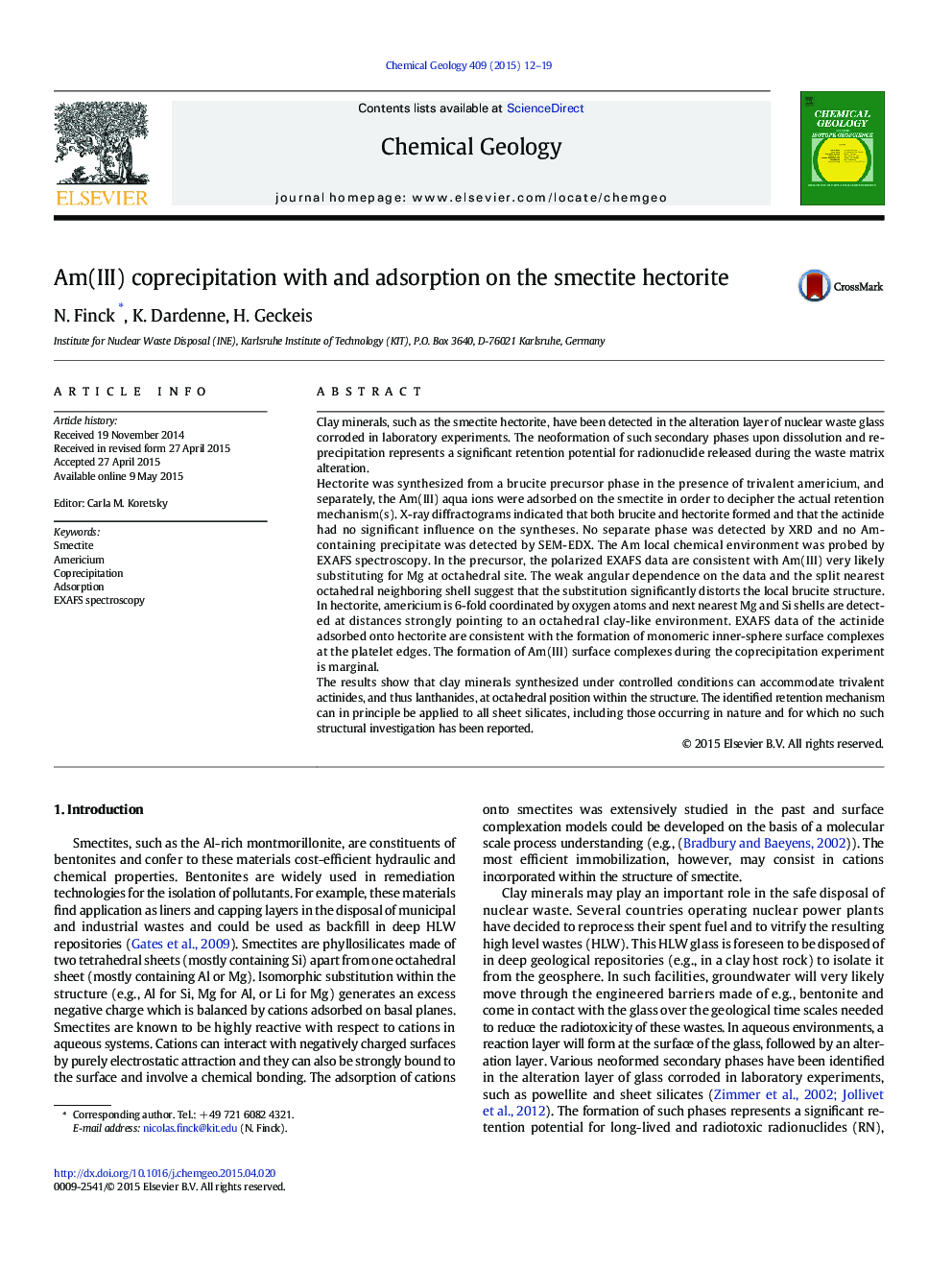| کد مقاله | کد نشریه | سال انتشار | مقاله انگلیسی | نسخه تمام متن |
|---|---|---|---|---|
| 6436368 | 1637565 | 2015 | 8 صفحه PDF | دانلود رایگان |

- The clay mineral hectorite was synthesized in the presence of americium.
- Am(III) is located in an octahedral clay-like environment upon coprecipitation.
- Am(III) forms inner-sphere surface complexes at the clay platelets edges upon surface adsorption.
Clay minerals, such as the smectite hectorite, have been detected in the alteration layer of nuclear waste glass corroded in laboratory experiments. The neoformation of such secondary phases upon dissolution and re-precipitation represents a significant retention potential for radionuclide released during the waste matrix alteration.Hectorite was synthesized from a brucite precursor phase in the presence of trivalent americium, and separately, the Am(III) aqua ions were adsorbed on the smectite in order to decipher the actual retention mechanism(s). X-ray diffractograms indicated that both brucite and hectorite formed and that the actinide had no significant influence on the syntheses. No separate phase was detected by XRD and no Am-containing precipitate was detected by SEM-EDX. The Am local chemical environment was probed by EXAFS spectroscopy. In the precursor, the polarized EXAFS data are consistent with Am(III) very likely substituting for Mg at octahedral site. The weak angular dependence on the data and the split nearest octahedral neighboring shell suggest that the substitution significantly distorts the local brucite structure. In hectorite, americium is 6-fold coordinated by oxygen atoms and next nearest Mg and Si shells are detected at distances strongly pointing to an octahedral clay-like environment. EXAFS data of the actinide adsorbed onto hectorite are consistent with the formation of monomeric inner-sphere surface complexes at the platelet edges. The formation of Am(III) surface complexes during the coprecipitation experiment is marginal.The results show that clay minerals synthesized under controlled conditions can accommodate trivalent actinides, and thus lanthanides, at octahedral position within the structure. The identified retention mechanism can in principle be applied to all sheet silicates, including those occurring in nature and for which no such structural investigation has been reported.
Journal: Chemical Geology - Volume 409, 20 August 2015, Pages 12-19